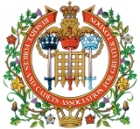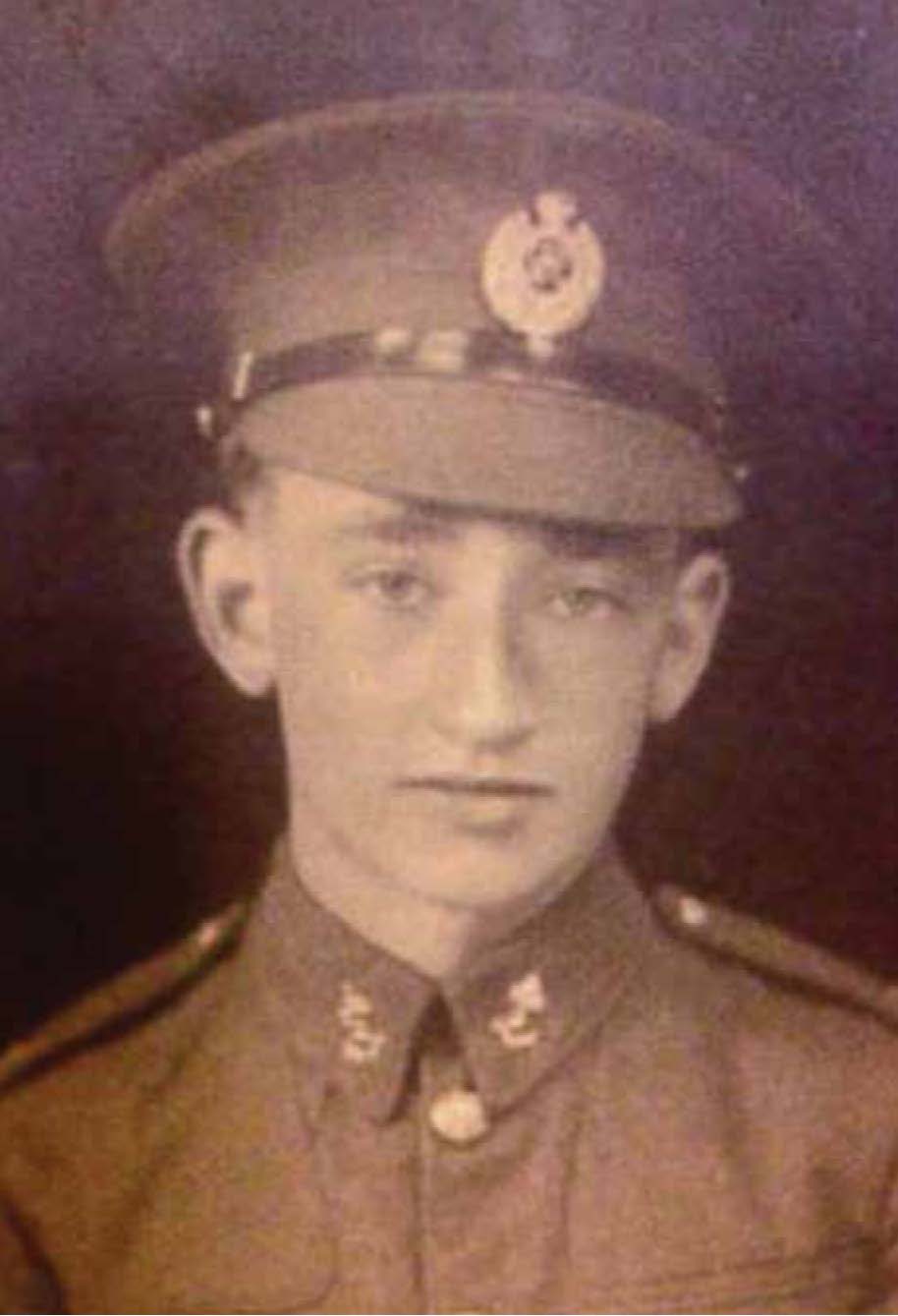Well-known personalities who have served in the Reserve Forces of Greater London
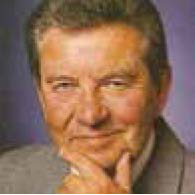
Richard Baker became a household name as a television newscaster and presenter for the BBC. He joined the RNVR in 1943. After the War, he served on with HMS PRESIDENTand was awarded the Royal Naval Reserve Decoration.

Great War poet Rupert Brooke joined The Royal Naval Volunteer Reserve in London and was commissioned as a temporary Sub-Lieutenant. He took part in the Royal Naval Division's Antwerp expedition in October 1914. He was posted to Blandford Camp, where the Royal Naval Division was then reformed after Antwerp and brought up to strength. Brook sailed with the Division for three months, but, on 28th February, he developed an infection from a mosquito bite and died on 23rd April. He is buried on Skyros, Greece.
Brooke's brother, Second Lieutenant William Brooke, served with the 8th (County of London) Battalion The London Regiment (Post Office Rifles) and was killed in action on the Western Front on 14th June 1915, aged 24.
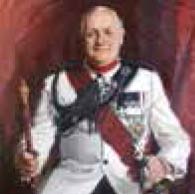
Sir John Chapple first entered the Army on 19th October 1949. He served in the ranks of the King's Royal Rifle Corps before being granted a National Service Commission as a Second Lieutenant in the Royal Artillery, completing his obligatory period of full-time service in 1951. He then served with the Territorial Army in 461 (Middlesex) Heavy Anti-Aircraft Regiment Royal Artillery (TA).This Unit, based at 444 High Road Finchley, was the successor Unit to the 11th (County of London) Battalion The London Regiment (Finsbury Rifles).
He then joined the Regular Army on 9th August 1954 and was granted a commission in the 2nd King Edward VII's Own Gurkha Rifles (The Sirmoor Rifles). His last appointment in September 1988 was that of Chief of the General Staff. John Chapple was promoted to Field Marshal on 13th February 1992.
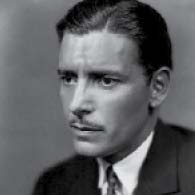
Screen actor born on 9th February 1891 in Richmond, Surrey. In 1909, at the age of 18 whilst working as a clerk in a shipping office in the City of London, he joined the 14th (County of London) Battalion The London Regiment (London Scottish)and was mobilised in August 1914. Coleman was seriously wounded at the Battle of Messines on 31st October 1914 and was invalided out of the Army in 1915. He would later find fame on stage and screen.
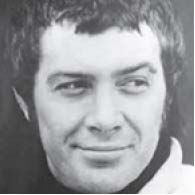
Film and TV actor Lewis Collins was born in Birkenhead and moved to London to further his acting career. His best known role was in the TV series The Professionals and his best known film role was that of an SAS Officer in the 1982 film Who Dares Wins. In the early 1980s, Collins was a member of No. 3 Coy 10th (Volunteer) Battalion The Parachute Regiment.
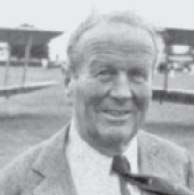
Born in Croydon, South London on 27th July 1917, John Cunningham joined the de Havilland Aircraft Company in 1935 as an apprentice, later joining No. 604 (County of Middlesex) Squadronof the Auxiliary Air Force. During WW2, Cunningham won fame as a night fighter ACE. After the war, he became a test pilot for de Havilland and re-joined the Royal Auxiliary Air Force on its reformation in 1939 and became Commanding Officer of 604 Squadron in 1941. However, he resigned in 1946 due to pressure of work testing the de Havilland Comet.
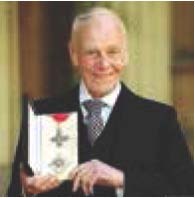
Bill Deedes had a distinguished career as a politician and journalist and was editor of the Daily Telegraph for many years. He joined 2/16th Battalion The London Regiment (Queen's Westminster Rifles)in 1938. At the outbreak of war, he switched to the King's Royal Rifle Corps and was awarded the MC in 1945.
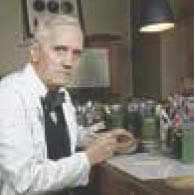
Whilst working in London, Alexander Fleming originally joined The London Scottish Volunteers in 1900 and transferred to the Territorial Force in 1908. In 1913, he was awarded the Territorial Efficiency Medal. Pressure of his research work forced him to leave The London Scottish in early 1914 but on the outbreak of War he volunteered for the Territorials and was commissioned into the RAMC. The War Service gave Fleming the valuable experience on the bacteriology of wound infections that led to him being considered an expert on the subject.

Journalist and security correspondent for the BBC. Frank Gardner joined the 4th (Volunteer) Battalion The Royal Green Jacketsat Davies Street and was commissioned in 1984. He served a total of nine years in the TA leaving with the rank of Captain. In 2004, on an assignment in Saudi Arabia, Gardner was shot and seriously injured by terrorists. In spite of his injuries, he has continued his career as a BBC correspondent.
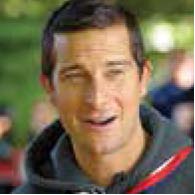
Adventurer, TV personality and author. Bear Grylls joined the Territorial Army in London in 1994 and, after passing selection, became a Trooper in 21 SAS Regiment (Artists) (Reserve).He suffered a freefall parachuting accident in 1996 and after 12 months rehabilitation at Headley Court, retired from the Regiment in 1997.
In July 2009, at the age of 35, he was appointed the youngest ever Chief Scout. In 2004, he was awarded the honorary rank of Lieutenant Colonel in the Royal Marines Reserve.
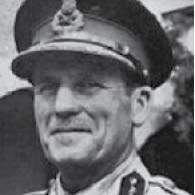
Born on 10th February 1896, he began his military career as a 17-year-old recruit when he joined the Territorial Force on 15th May 1914 as a 2nd Lieutenant in the 11th (County of London) Battalion (Finsbury Rifles) The London Regiment. On mobilisation at the outbreak of WW1, he accepted liability for service overseas; he became Machine Gun Officer of his Battalion and attached to the newly formed Machine Gun Corps in June 1915 and was promoted Acting Captain on 22nd June 1915. He became Chief of the Imperial General Staff in 1952 and Military Governor of Cyprus in 1955. He died on 20th January 1989.
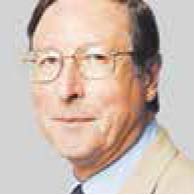
Journalist, historian and author, Sir Max Hastings was born in Lambeth. He was a foreign correspondent for the BBC and was the first journalist to enter Port Stanley during the 1982 Falklands War. He has presented several historical documentaries for the BBC and has written many books on Military History. He served in the 10th Battalion The Parachute Regiment (TA) in 1963.
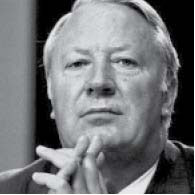
The former Prime Minister was a member of the Honourable Artillery Company and during WW2 served in the campaign in North West Europe. He commanded the 2nd Regiment HAC from 1947 to 1951.
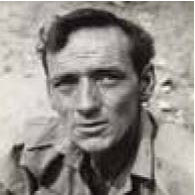
Sam Kydd was a prolific screen actor. He joined the TA in 1930 and served in the Queen Victoria Rifles at Davies Street, Mayfair. He was mobilised in 1939, and his unit was heavily engaged in the defence of Calais where he was captured and spent the remainder of the war as a POW.

William Claude Rains was a British-American stage and film actor; winner of a Tony Award and four- time Academy Award nominee. He was born in Clapham on 10th November 1889. At the outbreak of WW1, Rains joined the 14th (County of London) The London Regiment (London Scottish). In November 1916, he was involved in a gas attack at Vimy, which resulted in him permanently losing 90 percent of the vision in his right eye and suffering vocal cord damage. He was transferred to the Bedfordshire Regiment but never returned to combat, being demobilised in 1918 with the rank of Captain. After the war, Rains attended and then worked at the Royal Academy of Dramatic Art where he worked hard to lose his cockney accent and speech impediment. He worked in London theatres before moving to America in the early 1930s to pursue a film career. He became a US citizen in 1939.
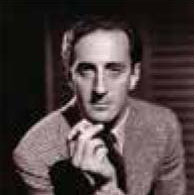
Stage and screen actor. He joined the 14th (County of London) Battalion The London Scottish in 1915, and in 1916 was commissioned into the 2/10th Battalion The King's Liverpool Regiment (Liverpool Scottish) where he served as an intelligence officer. He was awarded his Military Cross for 'Conspicuous Daring and Resource' on patrol.
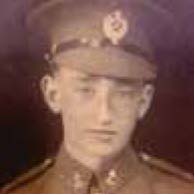
Aged 94 in 2014, Don Robbins was one of the few surviving pre-war Territorials. Don Robbins joined the 33rd (St Pancras) Battalion of the Royal Engineers in 1937 and was deployed as a searchlight operator in 1939. The searchlight operators once formed a large part of the Royal Engineers, but it was a short-lived outfit that is little-known today. He served alongside others from his local area of Barnet, North London to defend the area from Luftwaffe attacks.
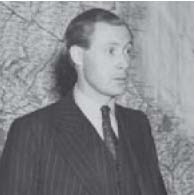
Duncan Sandys was the Minister of Defence who presided over the Defence cuts of 1958, known as ‘Sandys' Axe'. He joined the Territorial Army in 1937 and was commissioned into the Royal Artillery, serving with the 51st (London) Anti-Aircraft Brigade. He fought with the British Expeditionary Force in Norway and was wounded in 1941 and resumed his service as a member of the Army Council. He was also Chairman of the War Cabinet Committee, dealing with the Defence against flying bombs and rockets. Sandys left the Army in 1946 with the Rank of Lieutenant Colonel.
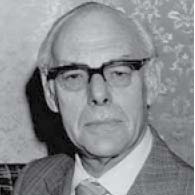
Dennis Thatcher is best known as the husband of the former Prime Minister Margaret Thatcher. He joined the Territorial Army in 1938 and was commissioned into the Royal Engineers serving with the 34th Searchlight (Queen's Own Royal West Kent Regiment) Royal Engineers and was transferred into the Royal Artillery in August 1940. After wartime service he remained on the Territorial Reserve of Officers until 1965.
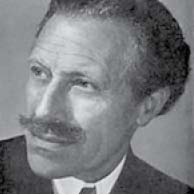
An archaeologist who became a household name through his books on the subject as well as his many appearances on television and radio. On the outbreak of WW1 he joined the Territorial Force and was commissioned into the Royal Artillery. He held several appointments in the UK including a period as an instructor with the London University Officers Training Corps. In 1917, now a Major, he was posted to France and saw action on the Western Front. He was awarded the MC for his War Service.
In 1939, Wheeler re-joined the Territorial Army with the rank of Lieutenant Colonel, stationed at Enfield in the then County of Middlesex. In 1941, his unit left Enfield eventually becoming part of the 8th Army in North Africa. He was promoted to Brigadier in September 1943 aged 53.

Born in London in 1895, Henry Williamson is best known as the author of Tarka the Otter, which won the Hawthornden Prize for Literature in 1928 and was made into a film in 1977. In January 1914, he joined the 5th (City of London) Battalion The London Regimentas a soldier in the Territorial Force. Aged 18, he was mobilised on 5th August 1914 and served in France on the Western Front. He was present at the Christmas Truce of 1914, but was invalided home in January 1915. He commissioned in April 1915 as a 2nd Lieutenant in The Bedfordshire Regiment and in 1916 transferred to the Machine Gun Corps, where he spent most of 1916 training. He was promoted Lieutenant in October 1916 and returned to the Western Front in February 1917, only to be invalided home again in June 1917, where he was diagnosed with shell shock. Henry Williamson did not return to the front line again. He was demobilised in September 1919 but found life at home too restrictive, so moved to Devon in 1921 where he began writing. He produced over fifty books and many articles and short stories.

Widely considered one of the greatest poets of the First World War, Wilfred Owen joined 28th (County of London) Battalion The London Regiment (Artists Rifles)on 21 October 1915. On 4 June 1916, he was commissioned as a Second Lieutenant (on probation) into The Manchester Regiment. He served on the Western Front in France. In June 1917, he was diagnosed with shell shock and sent to Craiglockhart War Hospital in Edinburgh for treatment where he met fellow poet Siegfried Sassoon. He returned to France in September 1918, where he was awarded an MC for conspicuous gallantry and devotion to duty in the attack on the Fonsomme Line on 1st / 2nd October 1918. Owen was killed in action on 4 November 1918 during the crossing of the Sambre–Oise Canal, exactly one week (almost to the hour) before the signing of the Armistice and was promoted to the rank of Lieutenant the day after his death. He is buried at Ors Communal Cemetery, northern France.

Sir John William Maxwell Aitken DSO DFC joined the Royal Auxiliary Air Force in 1935. He served as a Bristol Blenheim and Hawker Hurricane pilot with No. 601 (County of London) Squadron RAuxAFduring the early part of the Second World War, becoming Commanding Officer of the Squadron in June 1940 for just one month before commanding No. 68 Squadron RAF from July 1940 to January 1943. After the war, Max Aitken entered the family newspaper business becoming a Director of the Express Group and eventually Chairman of Beaverbrook Newspapers Ltd. He founded the London International Boat Show in 1954.

Baron Elworthy KG GCB CBE DSO LVO DFC AFC joined the Reserve of Air Force Officers on 14 August 1933. He was granted a commission as a pilot officer in No. 600 (City of London) (Fighter) Squadron, where he flew Hawker Harts, with effect from 15 January 1935. He became attached to the Royal Air Force on 28 October 1935, where he served with distinction throughout the Second World War. Later appointments included being appointed the first Commanding Officer of the Royal Pakistan Air Force and Commandant of the RAF Staff College in Bracknell. Sir Charles Elworthy served as Chief of the Air Staff from 1963-1967 and Chief of Defence Staff from 1967 until he retired in April 1971. He was made a life peer as Baron Elworthy of Timaru in New Zealand and of Elworthy in Somerset on 9 May 1972.

Born in Westminster in 1899, Billy Cotton enlisted into the 2/2 (City of London ) Battalion The London Regiment (Royal Fusiliers)in August 1914 by falsifying his age (he was 15 years and 3 months old). After training he became a Drummer and saw service in the First World War in Malta and Egypt before landing in Gallipoli on 13 October 1915 where he saw active service until the Battalion’s withdrawal in January 1916. During 1916 the Battalion disbanded and Billy joined the Royal Flying Corps, where he learned to fly Bristol Fighter aircraft and was Commissioned on 9 March 1918. Not yet 19 years old, he flew solo for the first time in 1918, on the day the Royal Flying Corps became the Royal Air Force. After the war, Billy founded the London Savannah Band which became popular for its music hall / vaudeville style. During the Second World War, Billy Cotton and his band toured France with the Entertainments National Service Association (ENSA). Billy Cotton is now mainly remembered as a 1950s and 1960s radio and television personality. His autobiography, I Did It My Way, was published in 1970, a year after his death.

Sir Cedrick Hardwicke was a stage and film actor whose career spanned nearly 50 years. Born in Lye, Worcester in 1893, Hardwicke attended Bridgnorth Grammar School in Shropshire. He originally intended to train as a doctor but failed to pass the necessary examinations and so turned to theatre and trained at the Royal Academy of Dramatic Art (RADA) instead. A successful stage actor before the First World War, Hardwicke served with the 14th (County of London) The London Regiment (London Scottish)from 1914 to 1921 as an officer in the Judge Advocate's branch of the British Army in France. He was one of the last members of the British Expeditionary Force to leave France. According to the Daily Mirror 1 January 1934, Hardwicke was one of the officers who escorted The Unknown Warrior from France. After the war, Hardwicke returned to acting appearing on stage in many of London’s top theatres. In 1934 aged 41, he became the youngest actor to be knighted. Hardwicke moved to America in the late 1930s to pursue film and stage work there. He died of lung disease in New York in 1964 aged 71. His body was flown back to England where he was cremated at Golders Green Crematorium in north London and his ashes were scattered.

John Laurie is probably best known for playing Private Frazer in Dad's Army from 1968-1977, appearing in 80 episodes of the sitcom. Born in Dumfries in 1897, he originally trained to become an architect, a career path he abandoned to join the Honourable Artillery Companyduring the First World War. It was upon his demobilisation that he trained to become an actor, making his first appearance on the London stage in 1922 at the Old Vic. Laurie went on to perform several Shakespearean plays with the Royal Shakespeare Company and enjoy a career in radio, theatre and film that lasted more than 50 years. Laurie died in 1980 aged 83 from emphysema in Chalfont St Peter. His body was cremated and his ashes scattered at sea.
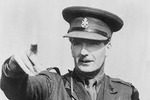
Born in Rushford, County Durham on 12th June 1897, Anthony Eden served as an officer in a New Army Battalion throughout the Great War after which he became a prominent politician. During the last months of peace in 1939, Eden joined the Territorial Army with the rank of Major in the London Rangers Kings Royal Rifle Corps.On the outbreak of war, on 3 September 1939, Eden did not mobilise for active service. Instead, he returned to Chamberlain's Government as Secretary of State for Dominion Affairs.

Victor McLaglen, born in Stepney, north London on the 10th December 1886, was an English boxer and Great War veteran who became a successful film actor. In 1913, McLaglen joined the 10th Battalion The Duke of Cambridge’s Own (Middlesex Regiment) Territorial Force and was commissioned in the rank of Captain. He served most of the war in the Middle East and in a return to boxing became the Heavyweight Champion of the British Army in 1918. McLaglen then had parts in several films in the UK and later in America. Towards the end of his life he became naturalised as a U.S. citizen. He died of a heart attack on the 7th November 1959 in California.

Lt General Sir Brian Horrocks was a regular soldier who was commissioned into the Middlesex Regiment in 1914. He saw active service in the Great War and was taken prisoner on the Eastern front. During the second world war, he rose to the rank of Major General commanding XXX Corps in Operation Market Garden. Between the wars, among various postings, Horrocks was appointed Adjutant of the 9th Battalion The Middlesex Regiment (Duke of Cambridge's Own)with the Territorial Army at their HQ at Pound Lane, Willesden from 1926 to 1930. Horrocks later commented that he considered the posting to the TA to be amongst his happiest periods in the Army and provided experience in dealing with citizen soldiers which would prove highly valuable during the second World War. General Horrocks died on the 4th January 1985 at Fishbourne, West Sussex aged 89.

Born into a working-class family in Portsmouth on 27th March 1912, Leonard James Callaghan left school early and began his career as a tax inspector, before becoming a trade union official in the 1930s. Following the outbreak of WWII, Callaghan applied to join the Royal Navy in 1940, but was initially turned down on the basis that a trade union official was a reserved occupation. He was finally allowed to join the Royal Navy Volunteer Reserve as an Ordinary Seaman in 1942. While he trained for his promotion, his medical examination revealed that he was suffering from tuberculosis. After he recovered, he was assigned to duties with the Admiralty in Whitehall where he was attached to HMS President.
He was assigned to the Japanese section and wrote a service manual for the Royal Navy The Enemy: Japan. He then served in the East Indies Fleet on board the escort carrier HMS Activity and was promoted to the rank of Lieutenant in April 1944. While on leave from the Royal Navy, Callaghan was selected as a Parliamentary candidate for Cardiff South. By 1945, he was serving on HMS Queen Elizabeth in the Indian Ocean. After VE Day, he returned to the United Kingdom to stand in the general election. He was elected to Parliament at the 1945 election and remained an MP until 1987. Callaghan was Leader of the Labour Party from 1976 to 1980 and Labour Prime Minister from 1976-1979. Callaghan remains the last British Prime Minister to be an Armed Forces veteran and the only one ever to have served in the Royal Navy. He died on 26th March 2005.

Ewen Edward Samuel Montagu was born in London on 19th March 1901, the second son of Baron Swaythling. Montagu served in WW1 as a machine gun instructor at a US Naval Air Station. After the war he studied at Cambridge and Harvard and was called to the bar in 1924.
A keen yachtsman, Montagu enlisted in the Royal Navy Volunteer Reserve in 1938. He served at the Royal Navy's East Yorkshire headquarters at Hull as an assistant staff officer in intelligence and the Naval Intelligence Division of the Admiralty where he was assigned to HMS PRESIDENTrising to the rank of Lieutenant Commander RNVR. He was the Naval Representative on the XX Committee, which oversaw the running of double agents.
While Commanding Officer of Naval Intelligence Division 17M, Montagu and Squadron Leader Charles Cholmondely RAFVR conceived ‘Operation Mincemeat’, a major deception operation. Montagu had the idea of having a corpse dressed as a British officer wash ashore in Spain, carrying faked papers revealing plans for the invasion of Greece (the real target was Sicily). Montagu manufactured a false identity, Major William Martin RM, for the body of Glyndwr Michael to have in his pockets: military ID, theatre ticket stubs, love letters and a photo of his fiancée, bills from a tailor and jeweller. The Germans were fooled completely. German documents found after the war showed that the false information went all the way to Hitler's headquarters and led to German forces being diverted to Greece and greatly assisting in the invasion of Sicily being a success.
From 1945 to 1973, Montagu held the position of Judge Advocate of the Fleet. He wrote ‘The Man Who Never Was’ (1953), an account of Operation Mincemeat, which was made into a film three years later. Montagu has a cameo role playing an RAF Air Vice Marshal who has doubts about the feasibility of the proposed plan.
After the war, Montagu received several decorations and awards for his wartime service, including an OBE which he left at the grave of Major Martin, ‘The Man Who Never Was’. A new film ‘Operation Mincemeat’ was released in 2021 starring Colin Firth and Kelly Macfadyen. Lt Cdr Montagu died in London on 19th July 1985.

Born in London on 1st June 1877, Henry Douglas King joined the Merchant Navy in 1891 at the age of 14. He then served in the Royal Navy before joining P&O, becoming a Midshipman Royal Navy Reserve, in 1893. He left the sea in 1899 to take up farming, studied law and was called to the bar in 1905. The year after, he was commissioned into the Royal Navy Volunteer Reserve.
In August 1914, on the formation of the Royal Naval Division, King was appointed to Drake Battalion which he commanded for a year in Belgium and Gallipoli. He returned unscathed from the Siege of Antwerp and arrived in the Dardanelles on 25th April 1915. He remained in Gallipoli until the evacuation on January 1916, by which time he had won a DSO, been thrice Mentioned in Dispatches and been wounded. For the remainder of the war, he served afloat and with the Royal Naval siege guns in Flanders where he was awarded the Croix de Guerre.
After the war, King was chosen to succeed London Division’s first Commanding Officer, Rupert Guinness, and has the distinction of being the only Commanding Officer of London Divisionever to be Commodore-in-Command. He succeeded in the difficult task of re-establishing the Division and rekindling the volunteer spirit in the apathetic post-war climate of the 1920s.
Like Guinness, King was a Member of Parliament, representing North Norfolk as an Independent from 1918 to 1922 and South Paddington as a Unionist from 1922 until his sudden death in 1930. King was lost in the foundering of his yacht ‘Islander’ off the Cornish Coast during a fierce summer storm on the 20th August 1930.

Born in London on 1st May 1884, on finishing school Francis Richard Henry Penn Curzon joined the London Division of the Royal Navy Volunteer Reserve following a long family tradition with the Royal Navy. On 28th October 1907, Lieutenant Viscount Curzon RNVR, was appointed Commanding Officer of the Sussex Division of the RNVR in Hove, Sussex with the rank of Commander RNVR.
When the RNVR was formed into the Royal Naval Division at the outbreak of WWI, Commander the Rt Hon Viscount Curzon served as Battalion Commander, Howe Battalion of the 2nd Brigade Royal Naval Division. Howe Battalion saw action at Gallipoli from April 1915 to January 1916; Mudros and Stavros, Salonica, from January to May 1916; and France and Belgium, May 1916 to February 1918, when the battalion was disbanded. During part of this period, Curzon also served as aide-de-camp to King George V.
A keen film maker, Viscount Curzon organised the cinematograph service for the Royal Navy and took the cinematograph film of the surrender of the German fleet at Scapa Flow from the deck of HMS Queen Elizabeth.
Following the armistice, Viscount Curzon moved into politics winning the Battersea South seat for the Conservatives at the 1918 General Election. On his father's death in 1929, Viscount Curzon ascended to the title 5th Earl Howe, making him ineligible for Parliamentary re-election. He was appointed a Privy Counsellor in 1929.
When the RNVR was reconstituted in 1921, Viscount Curzon resumed his position as Commanding Officer of the Sussex Division with the rank of Captain. He held this appointment until the RNVR was mobilised again in September 1939 on the outbreak of World War II, when he was promoted to Commodore.
Keen on motor racing, Viscount Curzon co-founded the British Racing Drivers' Club in 1928 with Dudley Benjafield and served as its President from 1929 until his death in 1964. During the 1930s, he became a well-known driver, competing in many national and international races and winning the Le Mans 24-hour race in 1931. After WWII, he was involved in organising the first British Grand Prix at Silverstone in 1948. Commodore The Earl Howe died in Amersham on the 26th July 1964.
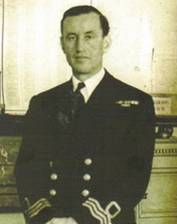
Ian Lancaster Fleming was born in London on 28th May 1908. He was a British writer, journalist and Naval Intelligence Officer who is best known for his post-war James Bond series of spy novels and as the creator of 007.
Fleming came from a wealthy family. His father was the MP for Henley from 1910 until his death on the Western Front in 1917. He was educated at Eton and Sandhurst. After working as a journalist and in banking, in May 1939 Fleming was recruited by Rear Admiral John Godfrey, Director of Naval Intelligence, as his personal assistant. He was commissioned into the Royal Navy Volunteer Reserve in July 1939 and attached to HMS PRESIDENT, initially as Lieutenant, but was promoted to Lieutenant-Commander soon after.
During the Second World War, Fleming frequently liaised with other sections of the government's wartime administration, such as the Secret Intelligence Service, the Special Operations Executive (SOE) and the Joint Intelligence Committee. Fleming also worked on intelligence co-operation between London and Washington, assisting in writing the blueprint for the Office of the Coordinator of Information, which eventually became the CIA.
Fleming was demobilised in May 1945 but remained in the RNVR until he was removed from the active list in 1952. He wrote his first novel, Casino Royale, in 1952 from his home, Goldeneye, in Jamaica. Ian Flemming died in Kent on 12th August 1964 and is buried in Sevenhampton, near Swindon.
